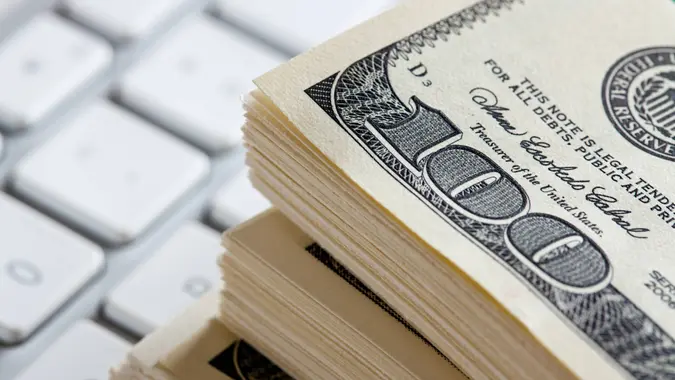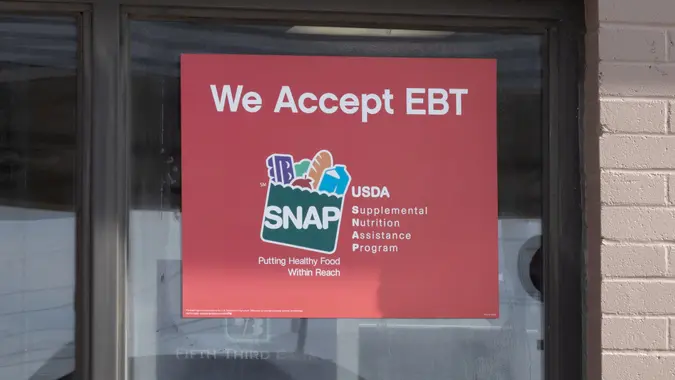4 Money Moves Retirees Should Never Make When Interest Rates Change

Commitment to Our Readers
GOBankingRates' editorial team is committed to bringing you unbiased reviews and information. We use data-driven methodologies to evaluate financial products and services - our reviews and ratings are not influenced by advertisers. You can read more about our editorial guidelines and our products and services review methodology.

20 Years
Helping You Live Richer

Reviewed
by Experts

Trusted by
Millions of Readers
The past four years have been characterized by inflation, prompting the Federal Reserve to raise the federal funds interest rate. This has translated into higher interest rates on loans, savings accounts and more. But the situation could soon change.
Federal Reserve Chair Jerome Powell all but confirmed that an interest rate cut is coming soon — perhaps when the Fed’s Open Market Committee meets on September 17 and 18.
“The time has come for policy to adjust. The direction of travel is clear, and the timing and pace of rate cuts will depend on incoming data, the evolving outlook, and the balance of risks,” the central bank leader said in his keynote address at the Federal Reserve’s annual retreat in Jackson Hole, Wyoming.
The current federal funds rate target of 5.25% to 5.50% is the highest in over two decades. Fed watchers expect a minimum 0.25% rate cut, to 5.00 to 5.25, but a 0.50% rate cut isn’t out of the question.
All of which might leave you wondering what to do — and just as important, what not to do — with your money.
Here are some money mistakes retirees should avoid:
Keeping Money in a Standard Savings Account
The average savings account rate was just 0.46% as of Aug. 19. High-yield savings account rates, on the other hand, currently top out at over 5.25% annual percentage yield. While high-yield rates will inch down as the Federal Reserve incrementally reduces the federal funds rate, they’ll continue offering decent interest on your money for the foreseeable future.
Ignoring CDs
If you already have at least three to six months’ worth of emergency savings set aside, consider moving any remaining money earmarked for savings into a high-yield certificate of deposit.
The main difference between a CD and a high-yield savings account is that the CD’s interest rate is locked for a predetermined period, typically ranging anywhere from one month to 10 years. When rates start to fall, you’ll continue earning the locked-in rate until the CD term ends.
Currently, you can find five-year CDs earning over 4% APY and shorter-term CDs earning over 5% APY. The only caveat is that you won’t have access to your funds until the CD matures.
Carrying Credit Card Balances
If you have significant credit card debt, it’s important to prioritize paying it off as quickly as possible — even if you expect the rate to fall.
Credit card companies calculate rates by adding a flat margin to the prime rate, which is currently 8.5%. If that were to fall to 8.25% following a 0.25% federal funds rate cut, you’d see negligible savings on interest — less than $100 over five years on a $7,000 debt at the average rate of 22.76% as of June, according to the Federal Reserve.
In addition to paying more than the minimum payment each month, consider contacting your credit card company to ask for a lower rate. A lower rate means more of your payments go toward the principal balance, which pays the debt off faster.
Staying Out of the Stock Market
The market tends to be more volatile in times of economic uncertainty, but don’t let that keep you from continuing to invest. For one thing, consistent investing means you buy more stocks when prices are low and fewer when prices are high, which keeps the average price per share in check even if lower interest rates drive stock prices up. And the longer you’re invested, the more time your money has to grow and compound.
 Written by
Written by  Edited by
Edited by 

























